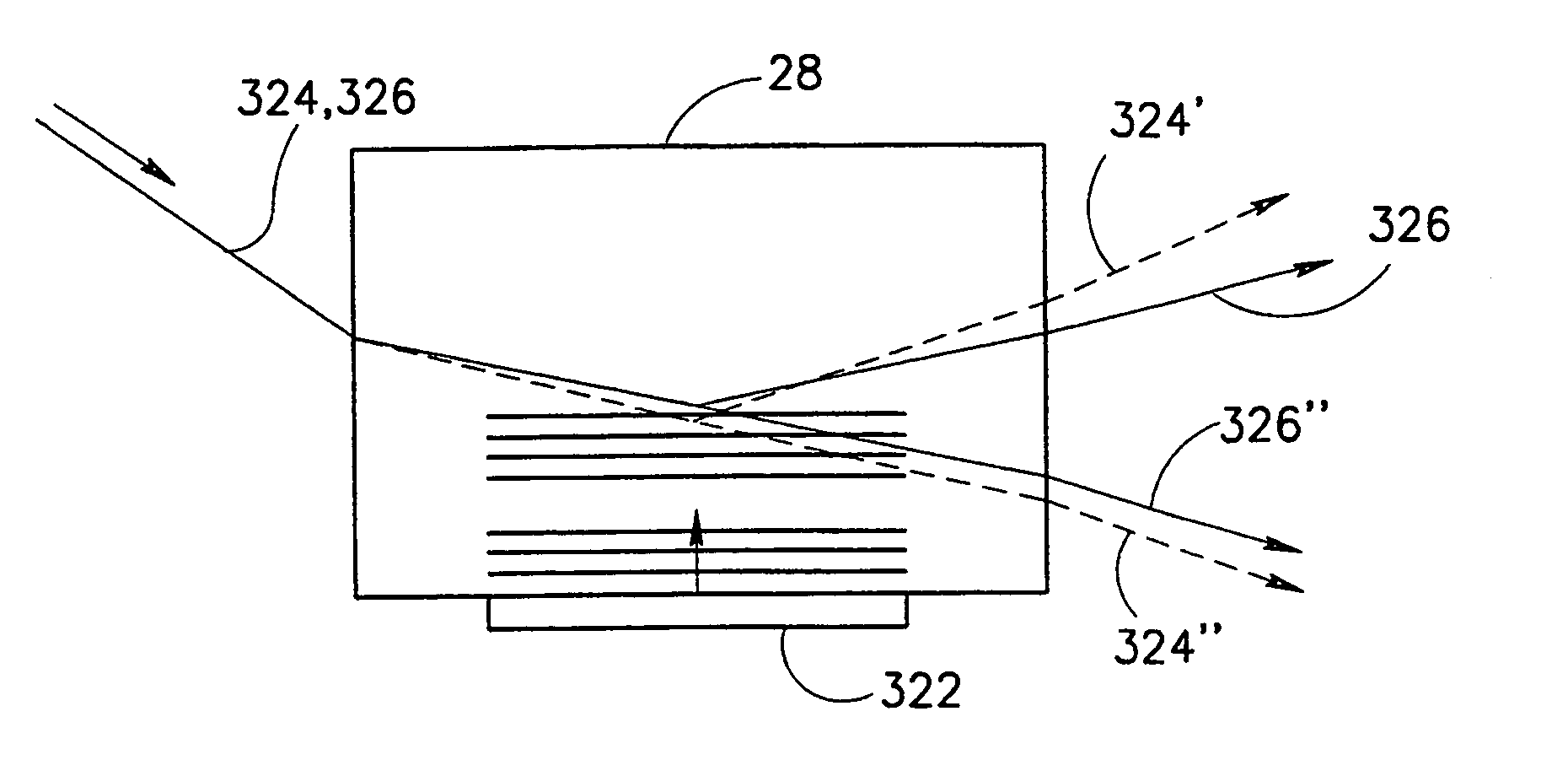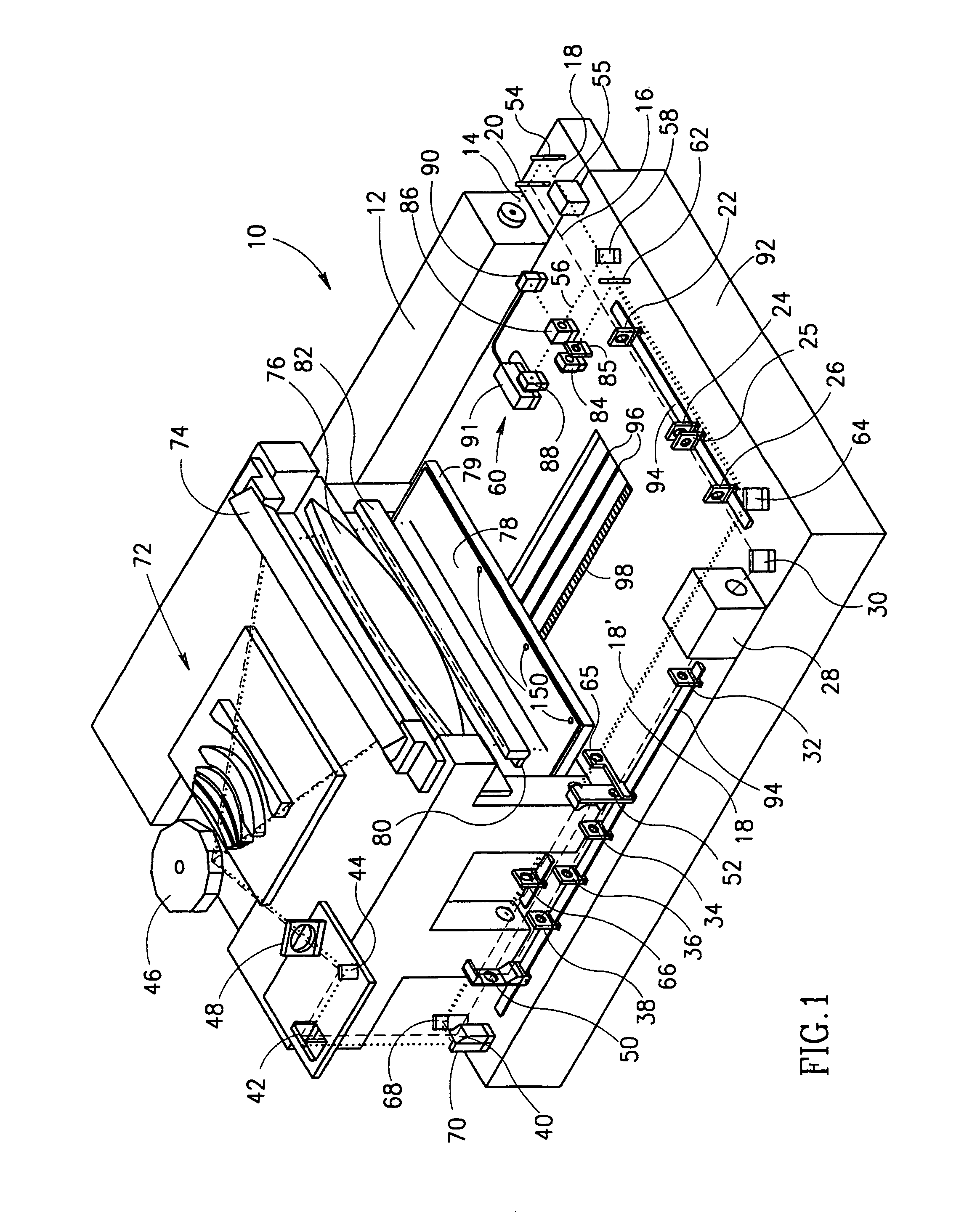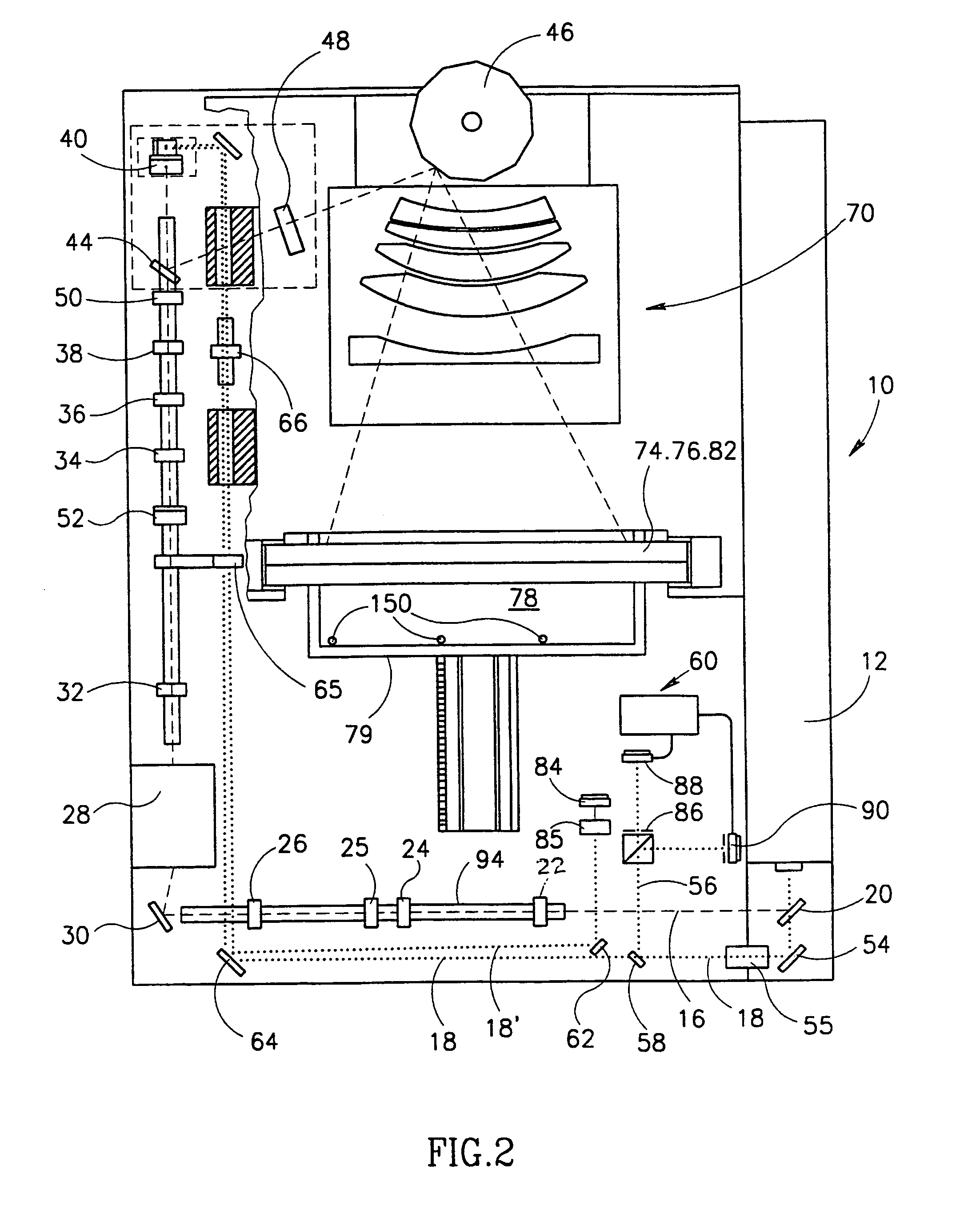Scanner system
a scanning system and scanning beam technology, applied in the field of scanning surfaces, can solve the problems of uniform power of the long-distance beam of the oblong beam, and achieve the effects of reducing laser power, increasing overlap, and reducing laser power
- Summary
- Abstract
- Description
- Claims
- Application Information
AI Technical Summary
Benefits of technology
Problems solved by technology
Method used
Image
Examples
Embodiment Construction
System Overview
[0185]Reference is made to FIGS. 1–3, which show an exemplary direct writing printed circuit board scanner 10, in accordance with a preferred embodiment of the invention. Scanner 10 comprises a laser source 12, whose output wavelength is suitable for exposing a photoresist coating. In a preferred embodiment of the invention, an Argon Ion type ultraviolet laser, operating at 351.1 and 363.8 nanometers and delivering a maximum power of 4.4 watts has been found suitable. Such lasers are generally available and an Innova Sabre type laser of Coherent, Inc. of California USA or a Beam Lock 2085 type laser of Spectra Physics of California, USA, have both been found suitable. A beam 14 exits source 12 and is split into two beams, a main beam 16 and a test beam 18, by a first beam splitter (or partially reflective mirror) 20. As explained below, main beam 16 (shown as a dashed line), is (eventually) used to scan and expose the photoresist on the printed circuit board. Test bea...
PUM
| Property | Measurement | Unit |
|---|---|---|
| feature size | aaaaa | aaaaa |
| feature size | aaaaa | aaaaa |
| feature size | aaaaa | aaaaa |
Abstract
Description
Claims
Application Information
 Login to View More
Login to View More - R&D
- Intellectual Property
- Life Sciences
- Materials
- Tech Scout
- Unparalleled Data Quality
- Higher Quality Content
- 60% Fewer Hallucinations
Browse by: Latest US Patents, China's latest patents, Technical Efficacy Thesaurus, Application Domain, Technology Topic, Popular Technical Reports.
© 2025 PatSnap. All rights reserved.Legal|Privacy policy|Modern Slavery Act Transparency Statement|Sitemap|About US| Contact US: help@patsnap.com



